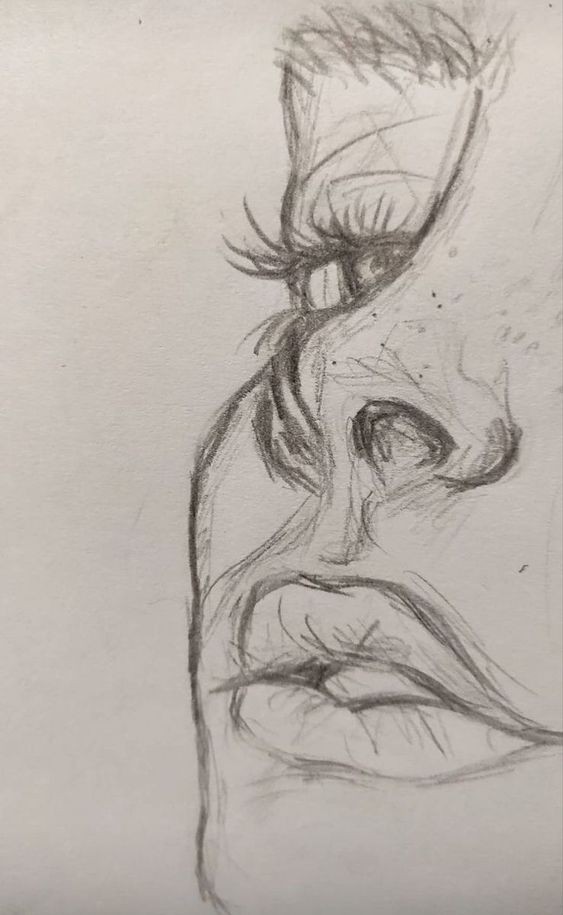Master the Art of Face Sketching with These Simple Tips!
Sketching faces can be one of the most rewarding challenges for any artist. Capturing the likeness, emotion, and character of a person on paper takes practice, but with the right techniques, you can improve your skills and create stunning portraits. Whether you're a beginner or looking to refine your skills, these simple tips will help you master the art of face sketching.
1. Understand the Basics of Proportion
Before diving into details, it’s essential to grasp the basic proportions of the face. The human face follows certain general guidelines:
The eyes are positioned halfway down the head.
The space between the eyes is roughly the width of one eye.
The bottom of the nose sits about halfway between the eyes and the chin.
The mouth is usually positioned about one-third of the way down from the nose to the chin.
These guidelines can vary depending on the individual, but they provide a solid foundation to start with.
2. Start with Simple Shapes
When beginning a face sketch, start by blocking in the basic shapes. Draw an oval or circle for the head, and lightly sketch in lines to mark the center of the face and the eye line. This will help you maintain symmetry and proportion as you build the features.
Use circles for the eyes, triangles for the nose, and a curved line for the mouth.
These shapes serve as a framework that you can refine as you add detail.
3. Focus on the Eyes
The eyes are often the focal point of a portrait, so it’s essential to get them right. Pay close attention to the shape of the eyes, the placement of the pupils, and the curve of the eyelids. Remember that the upper eyelid usually has a more pronounced curve than the lower one.
Don’t forget to include the tear duct and consider the light source, which will influence where you place highlights in the eyes to create a realistic sparkle.
4. Pay Attention to Light and Shadow
Shading can bring your face sketch to life by adding depth and dimension. Identify the light source and use it to determine where shadows and highlights fall on the face.
The areas around the eyes, under the nose, and below the lower lip typically have the most shadow.
Use soft, light strokes to build up the shading gradually, and don’t be afraid to use an eraser to lift highlights and refine the light areas.
5. Define the Nose and Mouth
The nose can be challenging because it’s a three-dimensional structure with subtle shading. Start by sketching the basic shape—a triangle for the bridge and two small circles for the nostrils. Use light shading to define the contours of the nose without heavy lines.
The mouth is equally tricky, as it’s not just a simple line but a complex shape with curves and volume. Start by drawing the outline of the lips, paying attention to the natural curve and thickness of the upper and lower lips. Use shading to indicate the volume and form of the lips, remembering that the upper lip is usually in more shadow than the lower lip.
6. Capture the Expression
A key part of face sketching is capturing the expression and emotion of your subject. Subtle changes in the eyebrows, eyes, and mouth can significantly alter the mood of your portrait.
Pay attention to the angle and curve of the eyebrows, the openness of the eyes, and the tension or relaxation of the mouth.
Practice drawing different expressions to develop your ability to convey emotion through your sketches.
7. Refine the Hair
Hair can add a lot of character to a face sketch, but it can also be one of the most challenging elements to render. Instead of trying to draw every strand, focus on capturing the overall shape and flow of the hair.
Start by outlining the hair's shape, then add texture and detail with soft, flowing lines that follow the direction of the hair. Use shading to indicate volume and avoid making the hair too dark or heavy.
8. Practice, Practice, Practice
Like any skill, mastering face sketching takes time and practice. Don't be discouraged if your first attempts don’t look exactly as you imagined. The more you practice, the better you'll understand the unique shapes and proportions of different faces.
Try sketching from photos, live models, or even your reflection in a mirror. Experiment with different styles and techniques until you find what works best for you.
Conclusion
Sketching faces is an art form that requires patience, observation, and practice. By starting with basic proportions, focusing on key features, and refining your techniques, you can develop your ability to create lifelike and expressive portraits. Remember, every sketch is an opportunity to learn and improve, so keep practicing and enjoy the process of bringing faces to life on paper. Happy sketching!






